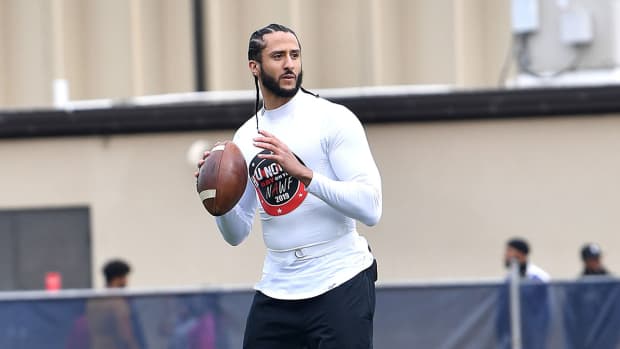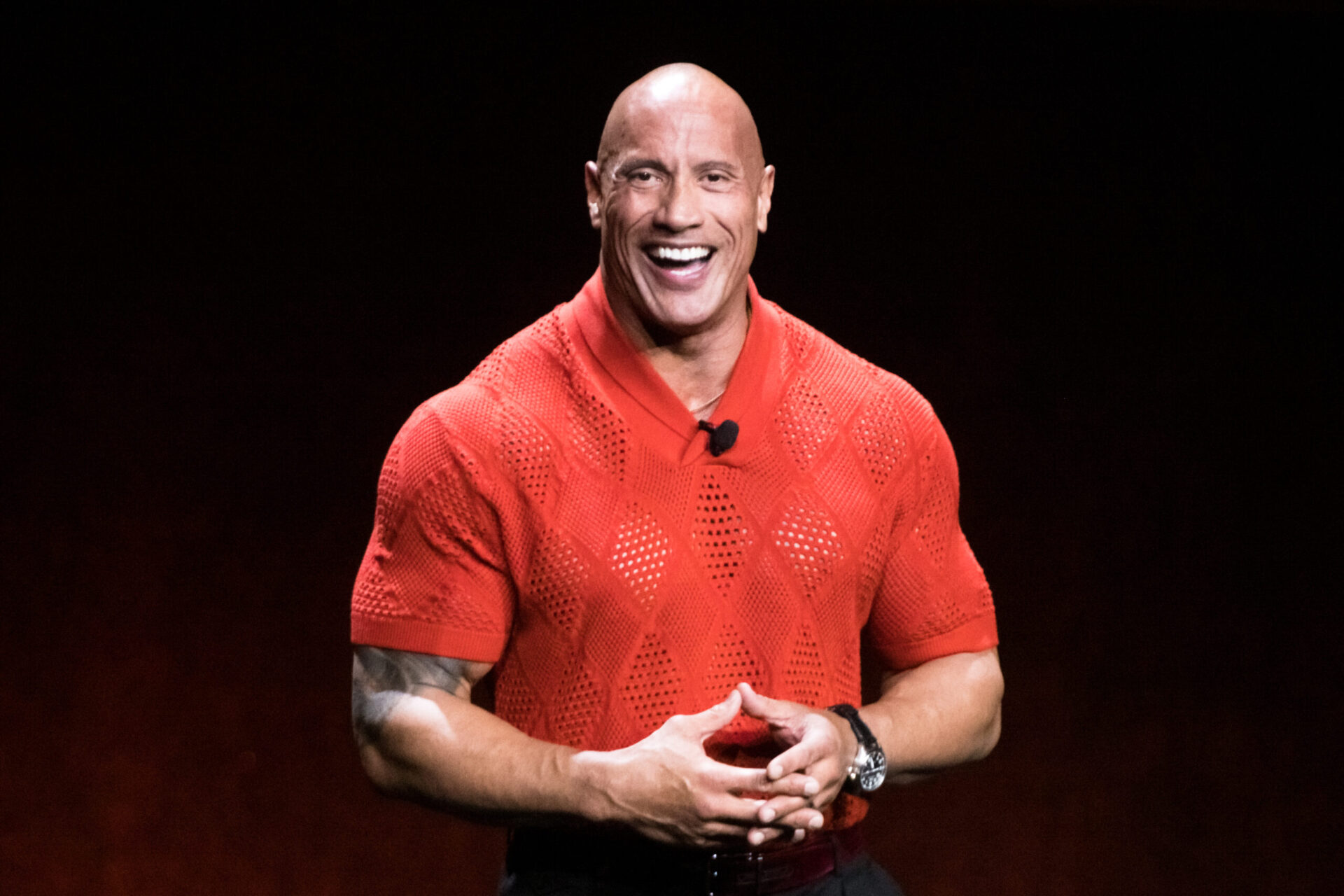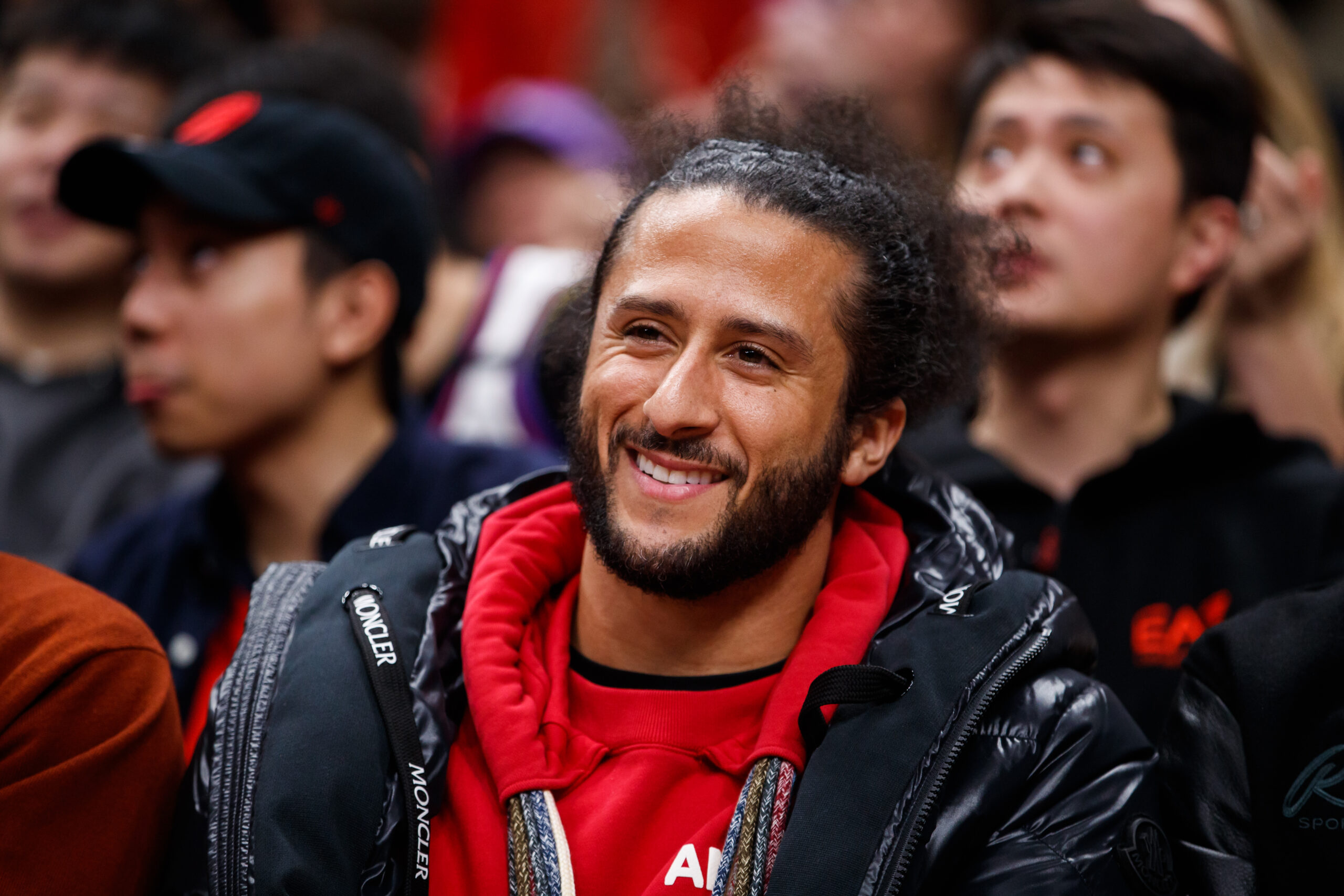The NFL didnt have to do this.
They didnt have to collude against Colin Kaepernick and Eric Reid to make an example out of them. They didnt have to create an unjust policy that forces football players to stand during the National Anthem or face a fine.
Instead of displaying courage, owners chose cowardice.
Owners could have demonstrated democracy in these divided times, but instead they capitulated to white fear and white rage of a white fan base unwilling to wrestle with the reality that racism exists in America, and a fan base that refuses to acknowledge that police brutality has been an ongoing problem since emancipation.
Simply put, the last 15 months since Kaepernick became a free agent has been a failure of white leadership. But it didnt have to be this way.
The Shadow League on Twitter
The players feel disrespected, ignored and refuse to be victims of the oppression NFL owners seek to inflict upon them.” https://t.co/DI3dQlIvXY
Instead of making Kaepernick and Reid pay the ultimate price, owners could have changed the narrative.
The football trials of Tommie Smith, the Olympic hero in 1968 who raised his black fist during the playing of the National Anthem and averted his eyes away from the flag only to come home a pariah because his silent gesture shamed America, are instructive for this time. Smith went from outcast to wideout, because a white man in power ignored white rage.
***
In 1969, no athlete was more toxic than Smith. Along with running mate John Carlos, the two sprinters made many white Americans uncomfortable during their demonstration at the 1968 Olympics. White America felt cheated. They felt betrayed. They wanted to see black athletes perform, and nothing else. They did not want to know about racism, just races.
As one Detroit native complained, This disgraceful action would indicate that they did not run for America, but for themselves, for had they been concerned for America they would have not have publicly disgraced their country and their own people.
The damage was done. White America took the protest personally. Writer Jim Graham of the Denver Post called the gesture a deliberate, calculated insult to the white people of the United States.
Pissing off white America made the two sprinters untouchable. They were going to pay the price. While Carlos still had eligibility at San Jose State, Tommie Smith had to find a job. He had a wife, a newborn baby, and nobody would hire him.
He only had one prospect to hold onto, football. In 1967, before all the controversy about potential boycotts and clenched fists, the Los Angeles Rams drafted Tommie Smith to play receiver.
Although he did not play in college, drafting him made sense. With the success of Bullet Bob Hayes, the 100m champ in the 1964 Games, who also excelled at football at Florida A&M and became a star receiver for the Dallas Cowboys, professional football teams became enamored with track speed.
In 1965, the Giants drafted Henry Carr, the 200m champ in the 64 Games, and in 1967, the Los Angeles Rams drafted Smith. The following year, the Dolphins picked Jim Hines, the 100m champ in Mexico City.
But unlike future Hall of Famer Hayes, who was a football player with world-class track speed, Smith was a track guy and a track guy only. But the long-legged Smith, who had not played football since high school, could reach 27 mph in full stride. He had enough potential to make a coach take a chance on public enemy number one. The question was, who?
October 16, 1968 – U.S. Olympic Sprinters Protest Racial Inequality
The 1968 Olympic Games in Mexico City may be most remembered not for an athletic accomplishment, but for a silent act of protest. On October 16 of that year, two African American sprinters who placed first and third in the 200-meter dash – Tommie Smith and John Carlos – used their medal ceremony to make a statement.
The Rams wanted no part of him. Not after what he did. But by league rules, they had no choice. Two weeks after the protest, team administrator, Elroy Hirsch, said, I dont think by league law, anybody can be deprived of the chance of trying out. No team can refuse a man a tryout if it drafted him.
They had no plans to call him however, the Rams just wanted him to go away. He was too toxic.
As a Los Angeles Times writer, Charles Maher, wrote, Our department has received a half-dozen letters from people who say they dont think the Rams should sign Smith. No letters have been received from people who think the Rams should sign him.
If Smith wanted a tryout, he had to call the team. Smith eventually tried to negotiate a $30,000 bonus and a two-year, no-cut contract for $25,000 per year, but the Rams offered him the minimum requirement; a tryout.
They nearly cut him on the spot. They only gave him an hour and a half to show what he could do. In truth, they had no intentions of signing Tommie Smith. They let white backlash get the best of them.
But Smith still wanted to play. He needed to play. He had no money. At one point, his wife Denise told him, Youre a proud man, but somebodys got to help us. Im hungry, our son is hungry, hes nine months old and hes lost three pounds. Were behind on the house payments. Weve got to do something to get some money.
Smith persisted. The San Francisco 49ers did not give him the time of day. Al Davis, who is credited for hiring the first Mexican-American head coach and also the first Black head coach to lead his Raiders, wouldnt return his calls. Smith almost lost hope. Then he got a call.
Colin Kaepernick Will Be Amongst The Greats Like Tommie Smith, John Carlos & Peter Norman
Remembering the 1968 Olympics and how these men stood up for our people then and now. Colin Kaepernick will go down in history as a man who demanded change for his people just like Tommie, John and Peter. Nicole’s View “Tip Jar”: https://www.paypal.me/NLewis372
Paul Brown was to professional football what Branch Rickey was to baseball; the white savior who broke down racial barriers. Brown is the man who in 1946 signed Marion Motley and Bill Willis to the Browns to reintegrate professional football. When he signed the two black men, he said, The color of a player means nothing to me. It never has, and never will. Motley and Willis are two players who are part of my team, a team whose greatest asset is its team spirit. Theyre good ball players, both gentlemen, and fit perfectly into the organization. That they are colored is something that doesnt enter into the picture.
Because Brown signed the best talent regardless of color, while other teams worried about their white fan base, his teams won multiple championships, paving the way for full integration in football. Although the game passed him by, and he would later clash with superstars like Jim Brown, which would eventually lead to Browns firing in 1963, the coaching legend always wanted to be a part of the game.
In 1968, he bought a stake in the new AFL franchise, the Cincinnati Bengals. He also became their GM and head coach. When Tommie Smith was looking for a chance in the summer of 69, Paul Brown gave him a shot.
The Bengals signed Smith to a contract in July, and let him compete for a spot.

With hard work and dedication, he worked his way onto the practice squad. Although he only made $200 a week, and $900 if he played in games, Smith appreciated the opportunity. In his autobiography, Silent Gesture, he thanked Brown for continuing to give opportunities to black ballplayers based on their talent and character, which he had done long before other pro football teams had the idea.
But whats instructive in this situation in relation to todays NFL is that the Bengals kept Smith despite the white backlash. Immediately after Smith signed, white fans protested the decision. Within a month, Smith received numerous hate mails so much that he stopped opening mail with no return address and two death threats.
By August 13th, the Cincinnati Enquirer had received 32 letters about Smith, with 22 concerned about the Bengals signing him, and 10 suggesting hed suffered enough. And the Veterans of Foreign Wars (VFW) circulated a letter around the city to put pressure on the Bengals to cut him and to dissuade fans from cheering for him.
In face of all this pressure, Paul Brown continued to let him compete. When the season began with Tommie on the practice squad, all the white backlash seemingly went away. And Smith, who gained 15 pounds of muscle, improved enough to make the squad in late November.

But white rage never completely disappears. It bubbles to the surface when marginalized folks receive an opportunity.
And after the Bengals called up Smith, Don Hopewell of the VFW blasted Paul Brown.
Hopewell complained, We feel its very poor taste on coach Browns part in bringing this man to play in Cincinnati and it is particularly thoughtless in view of the fact that coach Brown has made a very comfortable living off the general public. This seems to be an absolute rejection of wishes of man and its our feeling that the only thing American in which Tommie Smith is interested is that good American dollar.
But Brown ignored him. When asked about the complaint, Brown said, I have no position. My position is no position. In essence, he stood with Tommie Smith.
To be sure, Brown should have said something and took a definitive stance in supporting Smith. But Browns statement is better than linking arms and then actively working to silence dissent. Most important, as a white man, Brown didnt back down to white rage. He looked past the anthem protest and saw a man, not a pariah.
Paul Brown, as he had done 23 years prior, did not worry about a white fan base uncomfortable with their own racism. He opted for talent and opportunity. And thats what is missing about todays NFL; a white man in power willing to have the courage to look past white rage.



